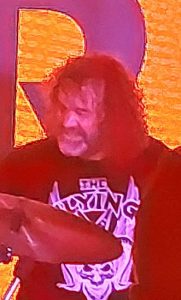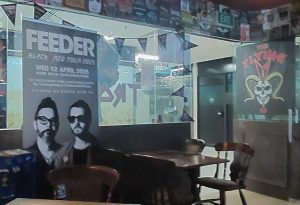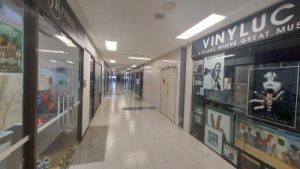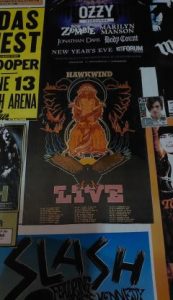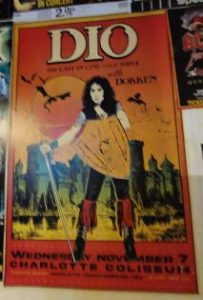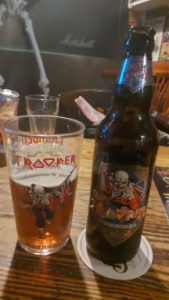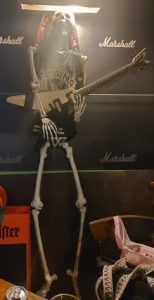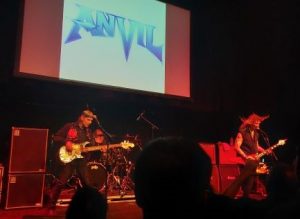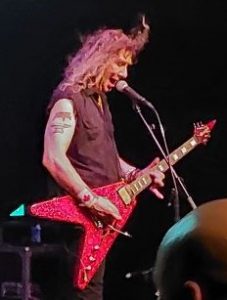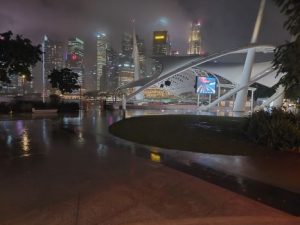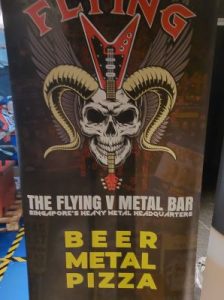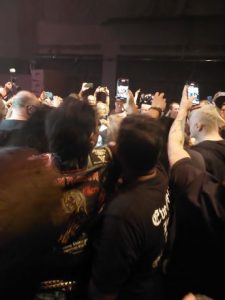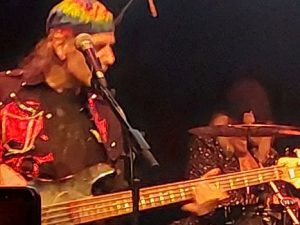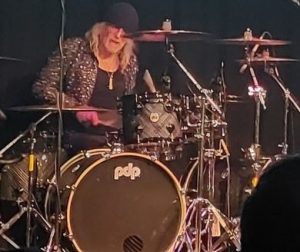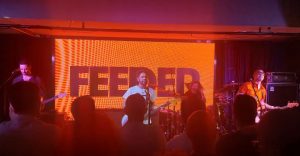
After the rock band Feeder – consisting of Welsh vocalist and guitarist Grant Nicholas, Welsh drummer Jon Lee and Japanese bassist Taka Hirose – appeared in the 1990s, I bought their first few albums: Polythene (1997), Yesterday Went Too Soon (1999) and Echo Park (2001). I enjoyed them at the time, but don’t remember much about them now – just a few songs like High (1997) and their biggest hit, Buck Rogers (2001).
After Echo Park, I stopped listening to Feeder. This wasn’t because of a decline in their musical quality. I moved around a lot in the 2000s and 2010s and lost touch with many of the bands I’d been into during the previous decade. Often I was living in countries where it was impossible to hear about and buy new music by Western rock bands. And YouTube isn’t much help if you’re somewhere with little or zero Internet connectivity.
Also – in an echo of the tragedy that befell fellow Welsh rockers the Manic Street Preachers – Feeder lost their drummer Jon Lee when he committed suicide in 2002. I actually suspected the band had called it a day after that. However, now I’ve done some research, I see that Nicholas and Hirose have soldiered on and produced nine further albums to date.
Anyway, it was recently announced that, as part of their current Black / Red tour, Feeder would perform at Singapore’s Hard Rock Café on April 2nd. Though the band are now officially a two-man outfit, Nicholas and Hirose are accompanied by rhythm guitarist and backing vocalist Tommy Gleason and drummer Geoff Holroyde. So, I purchased a ticket and, come April 2nd, got myself along to the Hard Rock Café.
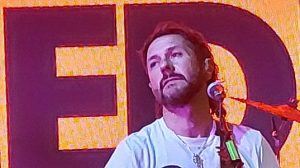
This was the second gig I’ve attended at that venue. With uncanny symmetry, the previous band I saw there was another Celtic one who came to prominence during the Britpop era playing indie / punky rock music, Northern Ireland’s Ash. Consequently, I couldn’t help but compare this Feeder gig with the Ash one… and it seemed slightly inferior.
For one thing, it was shorter. Feeder played for 80 minutes. I think they could have chucked in a couple of extra songs to get the gig to the hour-and-a-half mark. A more important issue, though, was the crowd. Ash had attracted a good mixture of Western expatriates and Singaporeans, who’d bopped to the band’s songs with great enthusiasm. The Feeder audience, however, consisted mostly of expats in their thirties and forties and they were, frankly, a bit lame. Stuck at the back of the crowd, I found myself staring across a sea of sensible T-shirts, slightly-greying hair, bald-spots, baseball caps (strategically placed to conceal bald-spots) and shaven scalps (strategically shaven to camouflage bald-spots). When they were at their most enthusiastic, they reacted to the music by, well, jiggling a bit. (Admittedly, that’s what I did – I jiggled a bit. But I have an excuse. I’m a frail old man now.) I felt sorry for Grant Nicholas when he suggested, “Let’s get a 1990s mosh-pit going…”, and nothing happened.
My mood was also dampened by the fact that the gig took place in the Hard Rock Café – surrounded by such holy rock-and-roll artefacts as J.J. Cale’s guitar, Michael Jackson’s cymbals and, er, the drumkit of Rob Blotzer from RATT. Yes, with the café’s tables and chairs removed for the evening, you get the feeling you’re in a small, sweaty, standing-room-only venue where the band are just a few yards away. That intimacy is great (and uncommon in Singapore). However, the Hard Rock Café doesn’t have a stage – or, if it does, it has no stage to speak of. It looks like the bands play on a strip of floor at one end of the main room. Thus, even if you aren’t far from the performers, you won’t see much of them over the heads of the spectators at the very front.
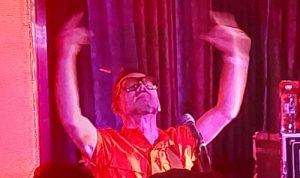
There’s the matter too of having to pay Hard Rock Café prices for your drinks. A pint of Carlsberg set me back a blood-curdling 28 Singaporean dollars, which is 16 British pounds sterling.
Still, despite the subdued crowd and the problems with the venue, once I relaxed and focused only on the show, I did enjoy it. Bravely, Feeder didn’t go down the easy route of pandering to 1990s nostalgia, which is currently modish thanks to the hype over this summer’s reunion tour by the Gallagher siblings, and they played just four songs off those first three albums I mentioned earlier – though the songs were well-received and Buck Rogers inevitably got a good reception late on in the set. On the other hand, they devoted more than half their set to material off their three most recent albums, Tallulah (2019), Torpedo (2022) and Black / Red (2024) and it was absolutely fine. The standout for me was their 2024 song Playing with Fire – I definitely prefer Feeder when they’re being heavier and Playing with Fire was a good essay in heaviness.
Kudos, by the way, to drummer Geoff Holroyde (who looks like a slightly-better-groomed Alan Moore) for wearing a Flying V Bar T-shirt and thus giving a plug to Singapore’s premier heavy metal pub. Mind you, I was in the Flying V a week earlier and they had a big banner up promoting tonight’s gig, so perhaps he was just returning the compliment.
